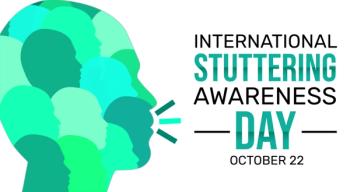
Is the Holiday Season Stroke Season?
Research demonstrates a seasonal trend associated with stroke onset. More strokes occur between November and February than any other time period. Due to the holidays and other events, these months can be stressful and disrupt usual routines. Overeating, excessive alcohol intake, physical inactivity, and sleep deprivation frequently accompany the holidays and can increase risk for stroke. Clinicians can educate and provide strategies to effectively navigate the holiday season and potentially reduce risk for stroke.
A cerebrovascular accident (CVA), or
Many studies demonstrate a seasonal trend associated with stroke.5-7 More strokes occur between November and February than any other 4-month period. During this time, Americans celebrate Thanksgiving, Christmas, New Year’s, and sporting events such as the college football National Championship and the National Football League’s Super Bowl. The holidays can increase levels of perceived psychosocial stress, disrupt routines, and interfere with exercise and sleep habits.8 Many Americans overeat and consume more alcohol than usual during the holiday season.
Increases in perceived psychosocial stress, sleep deprivation, excessive alcohol consumption, inactivity, and overeating can increase risk for stroke.
Perceived Psychosocial Stress
In a systematic review and meta-analysis of studies examining the association between perceived psychosocial stress and risk for stroke in adults, Booth and colleagues found that general stress and stressful life events were associated with increased risk for both ischemic and hemorrhagic strokes, as well as an increased risk for fatal strokes.9 A gender difference was also found, with women being at a higher risk for stroke as compared with men. Americans report increased stress during the holiday season from a variety of influences, including financial strain from commercialism and pressure to purchase gifts, time pressures due to shopping, planning holiday celebrations, hosting out-of-town guests, and unrealistic expectations.10 Women more than men report feeling stressed during holidays because more women bear the responsibility for holiday activities.
Sleep Deprivation
There is an association between sleep duration and risk for stroke.11 In a meta-analysis of observational studies examining sleep duration in adults, Ge et al found a positive association between short (ie, less than 5 hours) and long (ie, greater than 9 hours) amount of sleep and risk for stroke, as compared to an optimal seven hours of sleep.12 Less sleep also has been associated with
Alcohol Consumption
Alcohol consumption, particularly heavy and chronic alcohol use, can cause increases in blood pressure, increase risk for the development of heart arrhythmias, and increase risk for blood clotting disorders, all of which are risk factors for stroke.14 According to the Dietary Guidelines for Americans, adults of legal drinking age should limit alcohol consumption.15 Women should limit alcohol consumption to 1 drink per day, and no more than 7 drinks per week. Men should limit alcohol intake to 1 to 2 drinks per day, not to exceed 14 per week. In a meta-analysis of studies examining alcohol consumption and risk for stroke, Reynolds et al found that consumption of more than 60 grams of alcohol per day (about 5 to 6 standard drinks) was associated with an increased risk for stroke.16 During the holiday season, particularly the month of December, alcohol consumption increases.17 Many people celebrate the holidays with alcohol, and some use alcohol as a coping mechanism to manage perceived psychosocial stress during the hectic holiday season.
Physical Inactivity and Overeating
Moderate exercise such as walking, and a diet rich in fruits, vegetables, whole grains, and lean meats have been shown to be protective of stroke.4 But during the holiday season, many people are less physically active and tend to overeat and eat more highly processed foods, foods high in sodium, desserts and beverages with a high sugar content, and processed meats. Poor dietary habits have been associated with hypertension, diabetes, high cholesterol, obesity, and a higher risk for stroke.4
Strategies to Successfully Navigate the Holiday Season
During the holiday season, be intentional and thoughtful about eating, sleeping, and moving. As much as possible, focus on consuming unprocessed foods such as whole grains, fresh fruits and vegetables, and lean meats. If pressured to eat unhealthy foods or rich desserts, put small amounts on the plate and eat a few small (“polite”) bites. Limit your alcohol intake. Try to get at least 7 hours of sleep each night. Good sleep hygiene practices include “winding down” about an hour before bed to signal sleep. Turn off electronics and quiet the environment during this time—enjoy the fire in the fireplace, a warm cup of decaffeinated tea, or reflect quietly on the memorable moments of the day. Keep moderate exercise in the daily routine during the holidays. Take a brisk, 30-minute walk with family or friends and discuss the events of the day or review meaningful events since you last spoke. Researchers also recommend the following advice for patients18,19:
-Be realistic and set reasonable expectations for the holiday season. Make a list and prioritize the important activities you want to attend. Try to pace yourself and do not take on more responsibilities than you can handle. Ask for help as you need it and let others share the responsibility for holiday tasks.
-Develop a holiday budget and keep track of your spending. Overspending can lead to negative emotions and unwanted financial stress when the bills arrive after the holidays. Look for holiday activities that are low cost or free, such as viewing lights or decorations, window shopping, or listening to carolers. If you are cooking, consider giving holiday treats as gifts, or give other homemade items as gifts.
-Stay connected. Take time to reach out and contact friends or family members. Think about someone in your community who is alone during the holidays and invite them to your celebration, or share left-overs with them. If you have a faith practice, plan to attend religious celebrations.
-Be mindful and stay in the moment. Live in and enjoy the present. Try not to put all your energy (and expectations) into a single day (Christmas, New Year’s Eve) or event. Look to the future with optimism, and focus on the things you are grateful for.
What to Do if You Suspect a Stroke
A stroke is a medical emergency. If you suspect someone is experiencing a stroke, early identification and treatment is critical. Stroke outcomes are influenced by time to initiate treatment.20 Tissue Plasminogen Activator (tPA) is an US Food and Drug Administration approved drug designed to dissolve clots and must be administered within 4.5 hours of the onset of stroke symptoms to open vessels and restore blood flow. The acronym for recognizing the signs of stroke is BE-FAST21:
B – loss of balance, dizziness, or severe headache
E – changes in vision, such as blurry vision or loss of vision
F – facial drooping on 1 side
A – arm or leg weakness, particularly on one side of the body
S – speech difficulty or loss of the ability to speak
T – time. A stroke is a medical emergency. Call 911 immediately.
Dr Seale is the regional director of clinical services at the Centre for Neuro Skills, which operates post-acute brain injury rehabilitation programs in California and Texas. He is licensed in Texas as a chemical dependency counselor and psychological associate with independent practice. He also holds a clinical appointment at the University of Texas Medical Branch (UTMB) in Galveston in the Department of Rehabilitation Sciences.
References
1. Coupland AP, Thapar A, Qureshi MI, et al.
2. National Center for Health Statistics. Multiple Causes of Death 2018 -2021 on CDC WONDER Database. Accessed November 30, 2023.
3. Benjamin EJ, Virani SS, Callaway CW, et al.
4. Tsao CW, Aday AW, Alarzooq ZI, et al.
5. Huang HK, Chang WC, Hsu JY, et al.
6. Phillips DP, Jarvinen JR, Abramson IS, et al.
7. Ranganai E, Matizirofa L.
8. Olsson A, Thorén I, Mohammad MA, et al.
9. Booth J, Connelly L, Lawrence M, et al.
10. Kloner RA.
11. Patyar S, Patyar RR.
12. Ge B, Guo X.
13. Hong Y, Mo H, Cho SJ, Im HJ.
14. Gorelick PB.
15. US Department of Agriculture & US Department of Health and Human Services (2020).Dietary Guidelines for Americans, 2020-2025. 9th Edition.
16. Reynolds K, Lewis B, Nolen JDL, et al.
17. Uitenbroek DG.
18. Shattell M, Johnson A.
19. Wright L.
20. Saver JL, Fonarow GC, Smith EE, et al.
21. Aroor S, Singh R, Goldstein LB.
Newsletter
Receive trusted psychiatric news, expert analysis, and clinical insights — subscribe today to support your practice and your patients.













